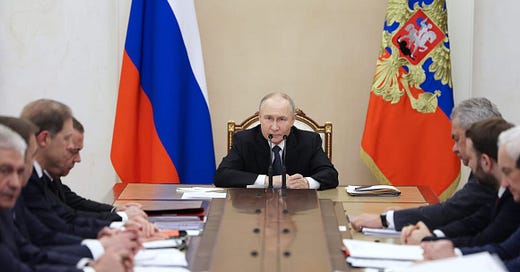Putin offers a ceasefire as Trump concedes Crimea — and Ukraine is left with fewer choices and louder doubts.
Silence for a Parade, Surrender for a Price
Hey Small Biters,
A ceasefire is supposed to sound like hope. But this one sounds like a trap.
This week, Vladimir Putin announced a three-day ceasefire in Ukraine, timed precisely with Russia’s Victory Day celebrations marking the end of World War II. It will run from May 8 to May 11, and according to the Kremlin, it’s a gesture of respect for history. But for Ukraine, it feels like just another manipulation.
President Zelenskyy responded sharply, calling it what it is: a propaganda stunt. Russia wants a stage for its parades — not peace. After all, during the Easter "truce," Moscow’s forces violated their own ceasefire thousands of times.
Behind the scenes, the story darkens further.
Just as Putin called for his symbolic ceasefire, Russia hardened its negotiating demands. Moscow now insists that any peace deal must involve international recognition of Crimea and four other Ukrainian territories — Donetsk, Luhansk, Kherson, and Zaporizhzhia — as permanently Russian.
The timing is no coincidence. Donald Trump, days earlier, publicly declared that “Crimea will stay with Russia”, suggesting that Ukraine should simply accept the annexation that has haunted the world since 2014.
Keep reading with a 7-day free trial
Subscribe to Small Bites to keep reading this post and get 7 days of free access to the full post archives.





